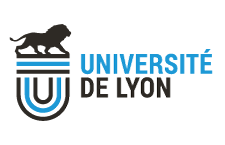WP-4
Multidimensional Image Processing
Data processing is an essential step to improve image formation quality and to extract pertinent indicators or biomarkers for diagnosis or therapeutic purposes, from the images provided by experimental and clinical imaging systems.
Image reconstruction and restoration are essential in medical imaging to ensure that the delivered image is a truthful map of given physical characteristics. Methods based on models or specific sparse representations are proposed for instance in MRI, Diffuse Optical Tomography and CT.
Current state-of-the art methods in image denoising collect similar patches to increase signal redundancy and better separate noise from signal. Semi-automatic and robust detection of elementary structures or events from images remains an open problem, moreover given the multi-modality/component nature of image data. Level sets, atlas-based and graph-cuts methods receive considerable attention for segmentation of anatomical structures. Variational framework is increasingly considered for image registration and motion estimation.
Also, extraction of new pertinent imaging biomarkers from different modalities and their association are essential steps for computer-aided diagnosis and treatment. To answer a given medical question, imaging biomarkers are required to be sensitive and specific. Unsupervised and hybrid clustering approaches, tensor voting framework and feature learning have been recently explored.
The partners involved in this project have shown their ability to reach application-oriented achievements from theoretical issues. They made theoretical contributions in inverse problems and optimization, specific image reconstruction solutions in various imaging modalities (Fluorescent Diffuse Optical CT, X-ray phase CT imaging, Compton imaging), ROI CT reconstruction and statistical denoising. Novel multi-component data representations are being investigated such as discrete and combinatorial multi-resolution models from 3D image data and meshes, Clifford Algebras, fractal and multifractal analysis.
Fast and efficient implementation of level sets segmentation have been proposed as well as statistically constrained image transport for motion estimation in image sequences (collaboration with mathematicians at ICJ, Lyon), and machine learning algorithms that can handle heterogeneous features.
Given data produced in WP1 and 2, this WP has 2 major objectives: to improve image formation and to derive pertinent indicators and imaging biomarkers for better diagnosis and therapy within targeted applications. The developments will be conducted in close collaboration with WP1, 2 and 5.
PRIMES Theses on WP4 themas:
TOMA Alina (2012 - 2015) - Méthodes d’optimisation par approches parcimonieuses pour l’analyse d’images tomographiques in vivo de la structure osseuse
Razvan STOICA (2012 - 2015) - Modélisation multi-physique patient spécifique du cœur (50% WP4, 50% WP5) 50% Labex PRIMES (Creatis - équipe 1) - 50 % ICJ (Institut Camille Jordan)
EL AZAMI Meriem (2013 - 2016) - Recherche de biomarqueurs par l’analyse multivariée d’images paramétriques multimodales pour le bilan non-invasif préchirurgical de l’épilepsie focale pharmaco-résistante (CREATIS)
GIACALONE Mathilde (2014 - 2017) - Traitement et simulation d’images d’IRM de perfusion pour la prédiction de l’évolution de la lésion ischémique dans l’accident vasculaire cérébral (CREATIS)
WP4 leaders
Patrick Clarysse - Creatis
Denis Friboulet - Creatis
Involved teams
- CREATIS
team 2: Fabrice Bellet, Hugues Benoit-Cattin, Olivier Bernard, Denis Friboulet, Thomas Grenier, Carole Lartizien, Chantal Muller, Rémy Prost, Sébastien Valette,
team 3: Philippe Delachartre, Hervé Liebgott,
team 4: Nicolas Ducros, Max Langer, Jean-Michel Léatng, Voichita Maxim, Cécile Olivier, Françoise Peyrin, Simon Rit, Marc Robini, David Sarrut, Bruno Sixou,
team 5: Sophie Cavassila, Denis Grenier, Bruno Montcel, Hélène Ratiney,
team 6: Carole Frindel, David Rousseau, Marlène Wiart,
service informatique: Eduardo Davila Serrano, Pierre Ferrier, Claire Mouton
- LIRIS
- LHC
- CEA-LETI
LDET: Véronique Rebuffel



 Welcome
Welcome PRES Lyon
PRES Lyon Contact us
Contact us Archives
Archives WebAdmin
WebAdmin